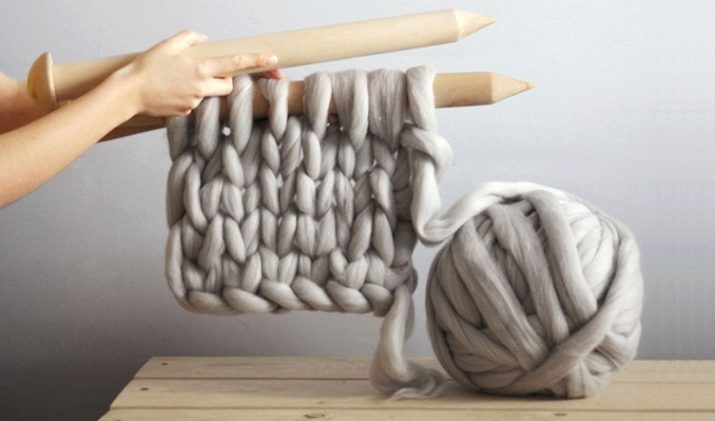Choosing a yarn for a blanket
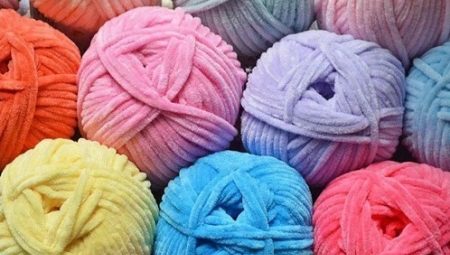
Knitting is a fairly common hobby, and surely many people dream of knitting a warm blanket.... It is pleasant to hide with a knitted product on a cold autumn or winter evening, and if it is also knitted with your own hands, and besides, for loved ones, it brings double pleasure.
For those who do not know where to start, we will tell in the article how to choose the right yarn for a blanket, which thread to stop on - artificial or natural, and also what criteria are the main ones when choosing.
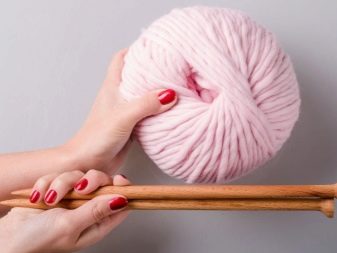

Varieties with natural composition
Natural yarn is a great option for a homemade blanket. It is better to use it for children's products, the main thing is that the composition does not cause an allergic reaction. There are many varieties of threads in which natural fibers prevail. Let's dwell on the most popular options.
- Cotton threads good for lace patterns, they are quite “docile” and pliable in work. Knitting from cotton can be quite dense - such a fabric is close to the knitted base.
This is an excellent material for blankets and envelopes for newborns to be discharged from a maternity hospital.
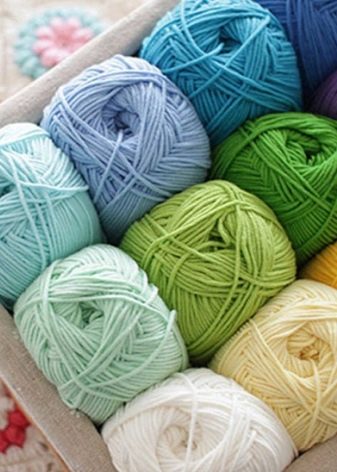
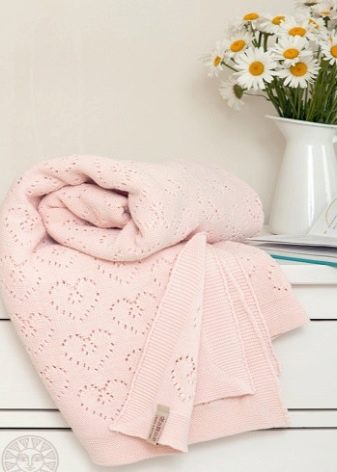
- Mercerized cotton thread tougher than just cotton and has a shiny shade. The knitted bedspread will turn out to be dense, a little "prickly", but it will be good to clean. Such a knitted fabric does not deform when applied.
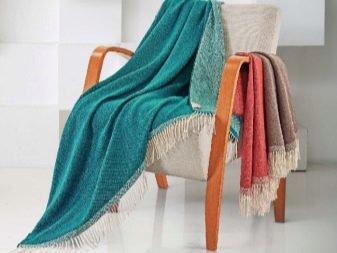
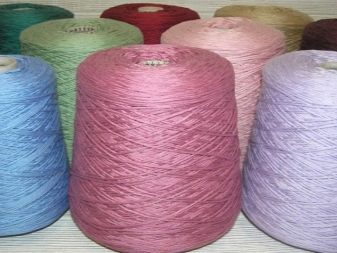
- Wool yarn Is a universal compound for knitting bedspreads of any size and thickness. Both the thinnest lace blankets and thick blankets are knitted with woolen threads. For the first option, choose a soft merino wool with a delicate structure. It is classified as hypoallergenic materials, so feel free to take blankets for newborns and baby blankets for envelopes.
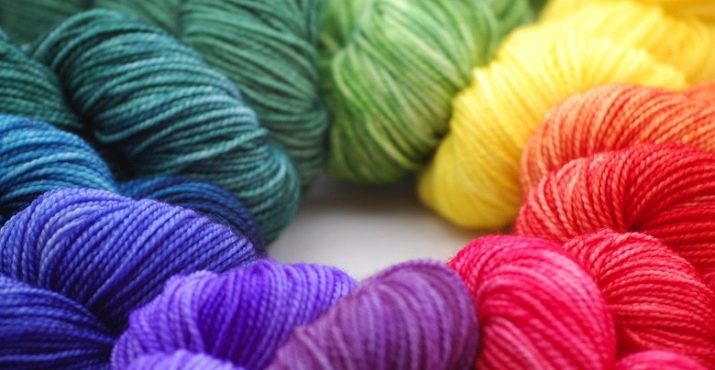
- Downy linen knit with alpaca wool or angora - these materials are very pleasant. With such a blanket in any home it will become warmer and more comfortable, and the evening will not be so cold.
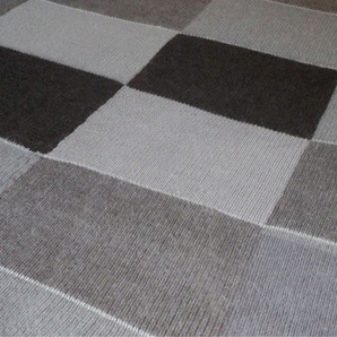

- If you want voluminous warm bedspreads, for example, with braids, then you need yarn sheep wool... A thread of medium thickness in weaving large patterns creates a good volume of the knitted fabric. This is a safe bet in such cases.
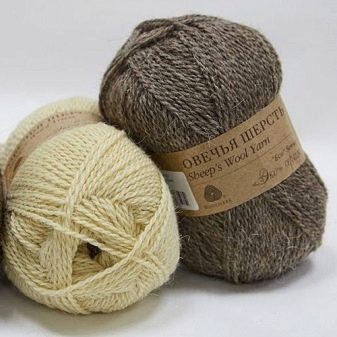
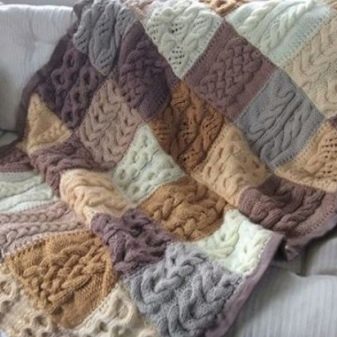
But from thick woolen threads (super-thick and even giant), they knit a canvas with the simplest pattern: it can be a garter knit or a front surface. Knitting needles are also chosen in large sizes, and then the product looks especially impressive, with large air loops.
By the way, a blanket from such threads can be knitted simply by hand, without using knitting needles. But you must be prepared for the fact that a product made of thick woolen threads is heavy, bulky, and you will have a hard time caring for such a product.
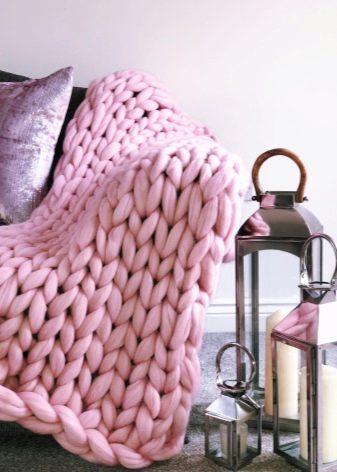

Artificial yarn
Let's take a closer look at the options for yarn with artificial fiber.
Acrylic thread
May be an alternative to wool. This soft and lightweight yarn is available in a wide range of colors and shades. But it must be borne in mind that acrylic is classified as a synthetic material, which has low air permeability (although in this case, it may be good, under such a blanket it is very warm). In addition, synthetics are poorly permeable to moisture and retain odors. But it does not prick, it is easy to care for a knitted product made of acrylic threads: it can be scrolled even in an automatic washing machine, no pellets are formed on it.
If you knit a blanket made of acrylic yarn, it will last you a long time and will be inexpensive, since these threads are relatively cheap. Thus, we do not discount this type of yarn and carefully study the information from the manufacturer on the skein label in order to choose the right number of knitting needles or crochet.
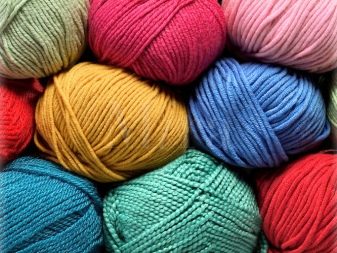

Velor yarn
It is also called plush (based on acrylic or viscose). This yarn has an unusually fluffy structure with tightly fitting villi... The threads resemble faux fur, although, in addition to synthetics, cotton fiber is sometimes found in the composition.
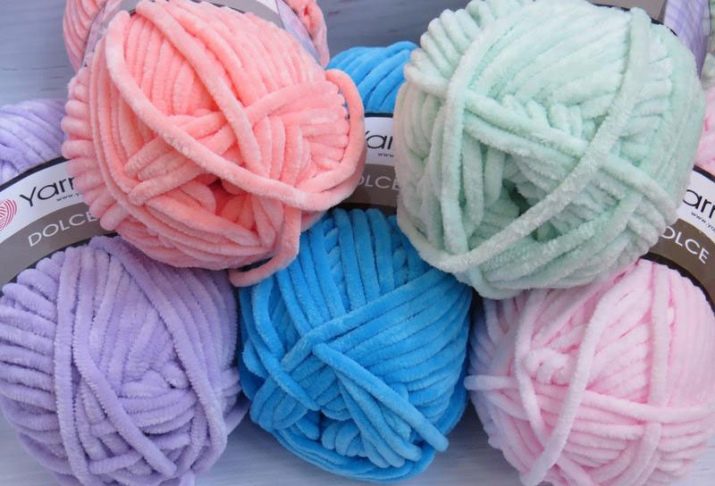
Threads Alize Puffy
This yarn from the “plush” category is distinguished as a separate line for making blankets. The peculiarity of the thread is that it comes with prepared loops, and knitting tools are not required for weaving - you just need to thread the loops according to the pattern.
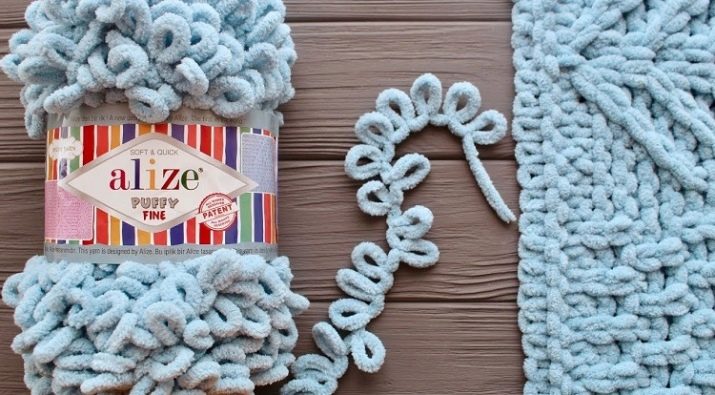
Microfiber
The yarn is also suitable for knitting a beautiful bedspread with a decorative pattern. Although it is also synthetic, this thread has good breathability.
By the way, the villi of this yarn are 40 times thinner than woolen fibers, a microfiber knitted product is fluffy and pleasant, and it does not shrink.
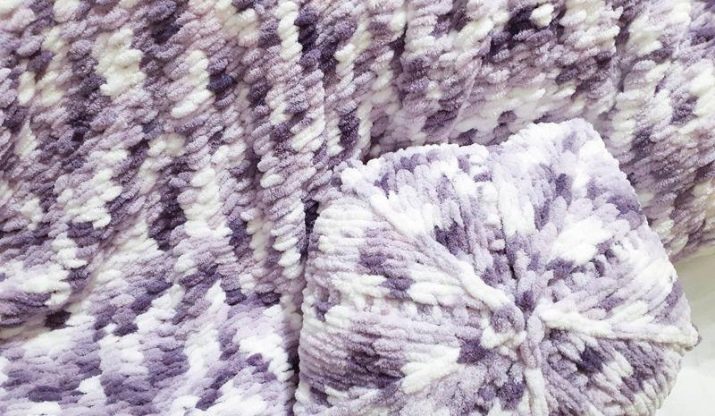
Nylon
Nylon is similar in properties to acrylic, but 100% nylon is not usually used to knit a blanket. In this option, it is better to choose a blended yarn in which nylon thread will be present to give the product more strength.

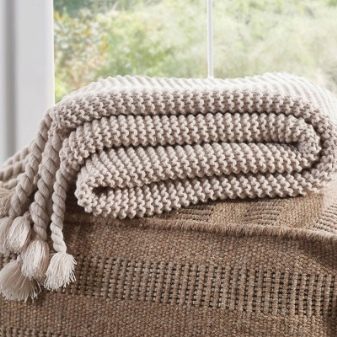
Blended yarn
It is a natural fiber with synthetic additives. This mixture is a great option for knitting a blanket. Mixed thread is inexpensive, very convenient to work with, and high-quality things are obtained from it.
When it comes to a versatile blanket that can be used to cover, make the bed, and take it with you, then usually only natural wool or pure synthetic thread is not chosen. The golden mean in this case is blended yarn.
For example, combine acrylic with mohair or merino. A combination of nylon yarn and merino wool will also work. The choice of yarn also depends on a number of criteria. Let's pay attention to the most important nuances that must be taken into account before starting to knit a blanket.
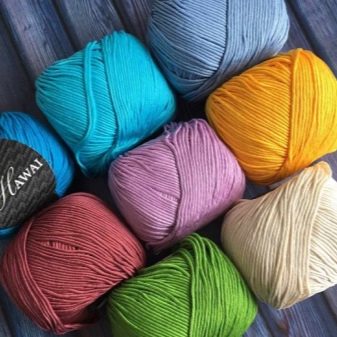
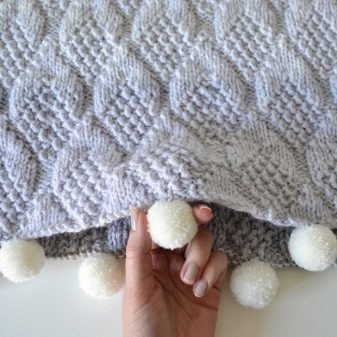
Criterias of choice
Yarn for a knitted blanket is not considered only based on the cost of the thread and its color. They are determined with the model and pattern of the future blanket. It is also necessary to decide on the method of knitting, and, finally, on the purpose of the future thing.Let's consider these criteria in detail.
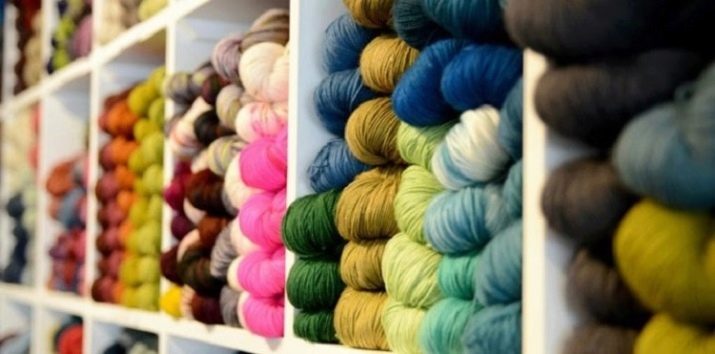
Appointment
To whom and for what purposes do you knit a blanket - the household purpose of the product is of great importance, including when choosing a yarn for its manufacture... By knitting a lighter bedspread, you get a versatile option. With such a model, you can take shelter in bed, and simply wrap yourself up, sitting by the fireplace on a winter evening. Or you can throw such a blanket over an armchair or bed as a cover. But products made of thick yarn turn out to be very heavy, so you hardly want to wrap yourself up in them or hide with them. Most likely, throw it on the floor instead of a rug, or use it as a decorative element of the interior (on a bed, armchair, on the floor).
A separate topic is blankets for children. They should be weightless, soft and comfortable so that it is easy to put the baby in a stroller or crib, and sometimes even wrap him in it. Therefore, a baby blanket is knitted from thin threads.
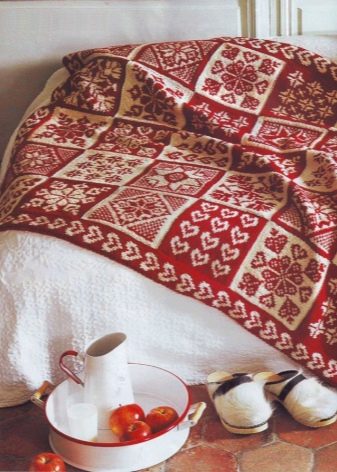
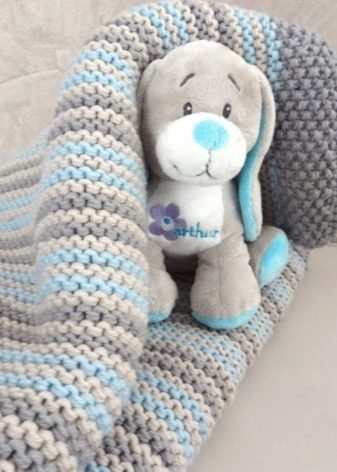
Season
Seasonality is an important factor in the application of the future finished product. Decide for what time of year you need a blanket, the choice of threads will also depend on this. If you are planning a blanket for a night's sleep in the summer, then go for cotton yarn. In this case, choose pure cotton, mercerized cotton threads will not work due to their rigid structure. If you want to hide or wrap yourself in a blanket on rainy evenings in the fall, then buy wool yarn. Such a thing will bring comfort and warmth to the house.
Winter blankets are also knitted from woolen threads, only thicker than autumn ones. The knitting is also chosen to be bulky, for example, braids, other large weaving. And be sure to pay attention to the color of the yarn: for winter bedspreads, give preference to warm colors.
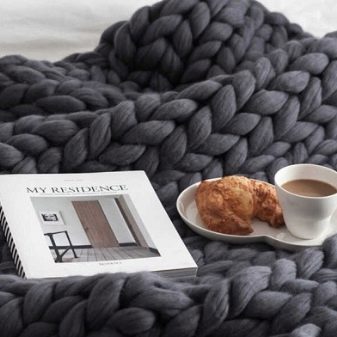
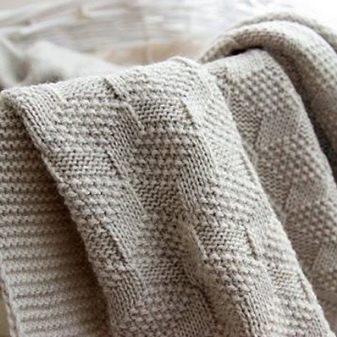
Knitting tool
When buying yarn, you should already know which plaid model you have chosen, in what technique and with what pattern, as well as what tool you will knit: knitting needles or crochet. When choosing threads, you need to take into account the characteristics of these main working elements. You can knit with knitting needles both openwork and braids, that is, in fact, any motive: both light patterns and complex volumetric ones. Depending on the size (thickness) of the knitting needles, the thread is selected. Ideal when the needles are twice as thick as the threads, but it is not always possible to "fit" like this.
If the thread has already been bought, or you got it from the store and want to knit a blanket, then choose the number of knitting needles by knitting small patterns. The choice of paired knitting needles or with a circular connection depends on the size of the blanket. The crochet hook is also quite popular and many people choose this tool for crocheting. But with the help of it, other patterns can also be knitted, for example, when you need to type columns or half-columns - this will not work with knitting needles.
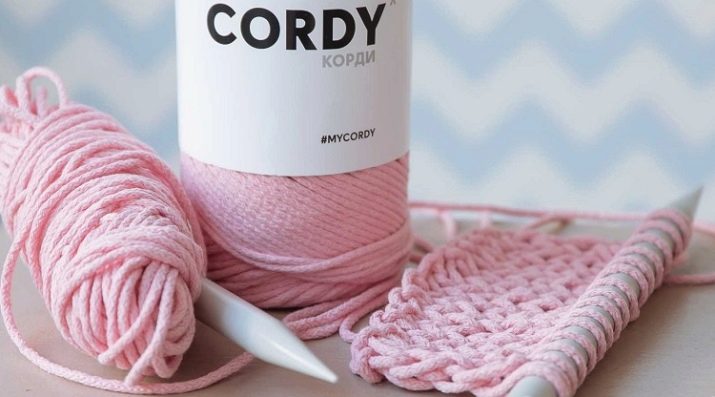
Crochet threads are also chosen according to the ratio of the thickness of the tool and the yarn. Manufacturers usually write on skeins their recommendations on what number to knit, there are separate tables on the Internet. But you can do this by means of usual measurement: it is necessary that the hook freely "grips" the thread, and it should not overlap the tip of the hook. The hands themselves can become the tool for weaving.
This technique has become fashionable recently: to create a blanket, it is not necessary to be able to knit or crochet. These elements are generally not needed when working with your hands. Choose the thickest threads for such knitting - these can be found recently in specialized stores... Knitting needles are also sold for giant yarn, but still a handmade blanket will turn out to be more lush and voluminous.
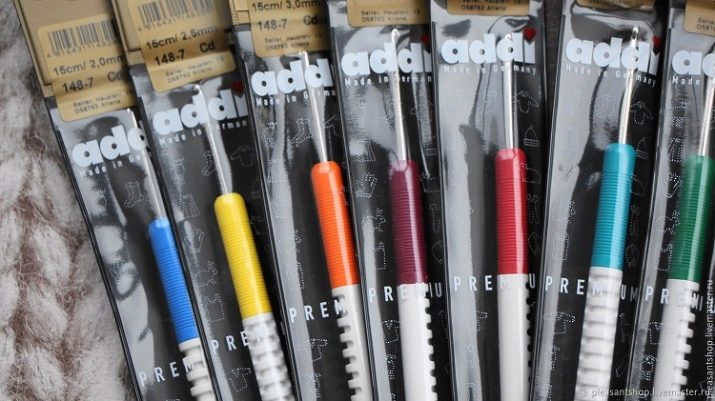
Drawing
The intended knitting motif is one of the main factors when choosing a yarn for a blanket. Not every drawing will be perfect if you use the wrong thread. For openwork, it will be a light yarn, possibly with a fluff to give the product an airiness. Only if we are talking about clear lines in a pattern, for example, in lace, then fluff will be inappropriate, since it will smooth the pattern and hide the openwork. In other cases, pubescence can hide mistakes in knitting and give the blanket a special tenderness.Adults will certainly appreciate such a thing, but babies do not need to knit a downy blanket: this can cause itching, irritation of the skin, and it is dangerous if the villi get into the nose or mouth during sleep.
In this case, use the natural composition of the threads without any additions. For volumetric weaving (braids, plaits and others), you will need threads of medium thickness. As a rule, such products are knitted from woolen threads and look very impressive. For fashionable patchwork style technique, you can choose any yarn both in thickness and in color (and usually it is several multi-colored threads)... When several threads are used in knitting a blanket, they should all be of the same quality and the same thickness.
The combination of thin yarn with thicker or woolen threads with cotton will lead to an ugly knitted fabric structure.

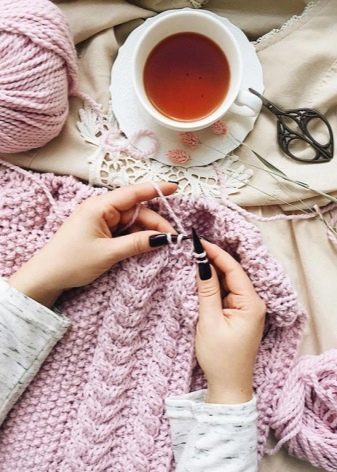
Knitting speed
The duration of knitting depends not only on the size of the intended product, but also on the pattern and yarn that you choose to work with. Of course, you also need to take into account the availability of free time, how much patience you have to sit behind the loops, what is the level of knitting (crocheting) proficiency. But it will definitely turn out faster to weave a blanket from a giant yarn with a simple scarf or knit stitches than to work with a complex openwork pattern from a thin thread.
So, in the first case, it may take only one evening or several hours, especially if it is weaving by hand. And to make a lace blanket from the finest merino fiber, you will have to work hard for a whole month, or even two - it really depends on your temperament and patience. Therefore, before taking on such work as knitting a blanket (blanket or bedspread), you need to carefully consider all the points, and also take into account the characteristics and properties of each thread.
